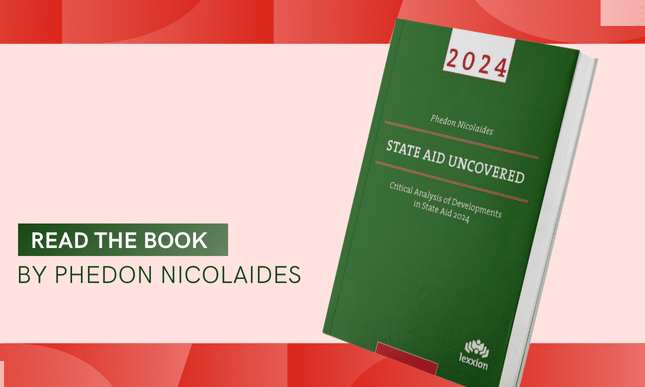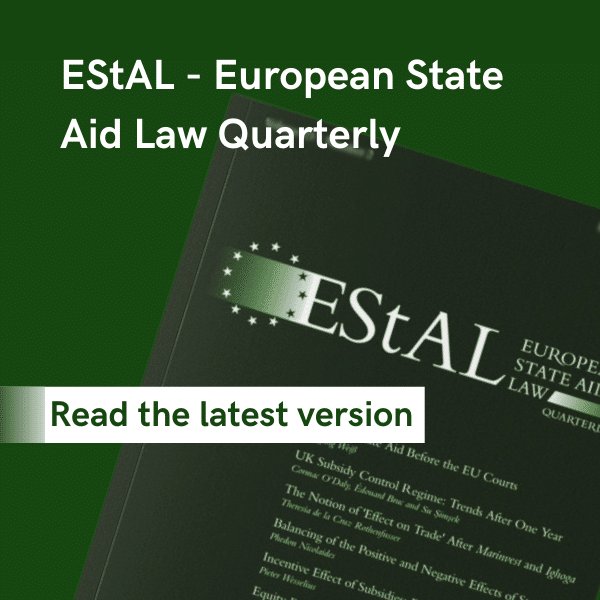
Adapting know-how for the needs of clients is not research. Aid for projects for which there is no demand is not in the common interest.
Introduction
The purpose of research is to discover something new. But what is often difficult to define for public authorities that wish to stimulate more research activities is how new must be the outcome of research. It is rare that research reveals something that is completely unknown. For example, some medicines or the medicinal use of some chemical compounds have been found by chance [e.g. penicillin or Viagra]. No one had suspected their existence or effects. But research is not some form of roulette whose outcome is left to chance. Research is an organised activity. Chance is in fact unwelcome as it messes up the replicability of any findings.
In the cases which are reviewed below the main issue was whether there was real research aiming to find something new.
-
Commission decision 2016/2394 on ValDeal [Hungary][1]
This case began with ex post monitoring by the Commission of an existing aid scheme. Preliminary indications suggested that the activities of ValDeal did not qualify as R&D. ValDeal was a small enterprise and received a non-repayable grant of HUF 472 508 090 (about EUR 1.86 million) for a supposedly R&D project. The total cost of the project was HUF 1 001 134 111 (approximately EUR 3.95 million). ValDeal’s own contribution was HUF 528 626 021 (approximately EUR 2.08 million).
The objective of the project was to develop an innovation management system specific to Hungary and the Central and East European region. The first step in the project was to buy licensed innovation management know-how from the University of Texas and the German INNO AG. ValDeal also bought from the University of Texas training on innovation management for its staff. The aid scheme obliged ValDeal to provide several services to its customers free of charge. ValDeal claimed that the subject of its R&D consisted in the adaptation of the purchased know-how to the Hungarian and the Central and East European business environment. On the basis of this adapted model, ValDeal provided free innovation management services to 18 undertakings and individual researchers selected out of a sample of 600 through a contest that ValDeal had organised.
In order to prove that the project did carry out research, ValDeal argued that it sought to acquire intellectual property rights for the results of its research. It registered trademarks with the Hungarian Patent Office for its graphic sign and for the composition of words “ValDeal Integrated Innovation Management Model”.
Existence of State aid
Since ValDeal received a public grant and since it engaged in economic activities, there was no doubt that the grant was a selective transfer of state resources which conferred an advantage on ValDeal. The fact that ValDeal bought the innovation-management know-how from the US and Germany proved that its activities which were subsidised by public funds were liable to affect trade.
In addition, the Commission found that ValDeal’s customers also benefitted from State aid because they received free services from ValDeal. The free services were funded by public money.
Compatibility of the aid
The Commission had serious reservations about the nature of the activities of ValDeal. It concluded they could not be classified as research activities on the following grounds.
First, ValDeal did not carry out any research of its own. Although it adapted the know-how it bought from the US and Germany, it used it to stimulate innovation by its clients. This means that research in the meaning of EU State aid rules is an activity that is conducted for the purpose of generating knowledge to be used by the entity that carries out the research. This also means that that entity bears the risk that the research will not find anything new or worthwhile.
Second, customisation of know-how to suit the needs of clients is not research. Rather it is a normal or typical activity carried out by advisors and consultants. Hence, adapting something to fit a certain organisational structure or type of activity is not research because it does not generate anything new. The know-how is already acquired and the needs, structures or activities of clients are also known.
Then the Commission examined whether the aid could be found to be compatible with the internal market on grounds other than support of R&D. At the time that the aid was granted Regulation 1628/2006 was in force. This was a block exemption regulation for regional aid. The Regulation allowed aid for the acquisition of know-how. The Commission deducted from the overall amount of aid the value of the services that were provided for free to ValDeal’s customers and concluded that the aid that was retained by ValDeal was less than the maximum permitted by the Regulation. Therefore, the aid was compatible with the internal market as a regional investment project.
With respect to ValDeal’s customers, the Commission assessed the aid directly on the basis of the Treaty. The analysis is a bit superficial but also appeared to be unnecessary because the estimated value of the services for each of the customers was less than the maximum de minimis amount of EUR 200,000. The Commission instead of finding that there was no aid for the customers, it declared it to be compatible with the internal market. Perhaps the reason was that the Hungarian authorities could not ensure that no other de minimis aid had been awarded to those companies.
Do you know we also publish a journal on State aid?
The European State Aid Law Quarterly is available online and in print, and our subscribers benefit from a reduced price for our events.
-
Commission decision 2017/70 on CEATF[2]
In this case the Commission ordered Spain to recover incompatible State aid that was granted allegedly to support research. The recipient of the aid was Centro de ensayos de alta tecnología ferroviaria de Antequera [CEATF], a state-owned entity that was established as a test centre for high-speed trains. The purpose of the aid was to enable research carried out by the CEATF.
Public funding of the CEATF consisted of grants and loans. Some of the grants and loans had already been paid back. The outstanding amount was EUR 135.2 million in grants and EUR 4.7 million in loans.
Existence of State aid
There was no doubt that the CEATF was engaged in an economic activity, that the grants provided a selective advantage and involved transfer of state resources and that they had the potential to affect trade and distort competition. The disputed element was whether the CEATF derived an advantage from the loans.
Spain argued that the interest rates charged for the loans corresponded to the interest rates that were defined in the 2008 Commission communication on reference and discount rates.
The Commission rejected this argument on the following grounds:
First, the methodology of the 2008 communication serves as a proxy for market rates when market rates are unavailable. In this case, the CEATF had also received loans from commercial sources so their interest rates could serve as indicators of market rates.
Second, the 2008 methodology requires the use of credit rating and collateral. Spain provided no information of the collateral that could have been pledged by the CEATF while with respect to the credit rating of the CEATF, the Commission considered that it was linked to that of the Spanish government.
By comparing the interest rates charged by Spain and the rates charged on the commercial loans that had been obtained by the CEATF, the Commission concluded that all public loans apart from one were provided at lower than market rates. Hence, it concluded that the CEATF received an advantage in the meaning of Article 107(1).
The Commission also examined the existence of State aid for the operator and future users of the CEATF. But since no operator was chosen and there were no users, it drew no conclusions.
Nevertheless, it explained that “(78) […] the absence of State aid can only be presumed if the tender procedure allows for the most economically advantageous offer to match the market value of the concession and if the Member State concerned checks that the resulting concession fees are in line with market prices by carrying out a discounted cash flow analysis and a comparison with fees paid for similar services elsewhere [footnote 41].”
Footnote 41 refers to Commission decision SA.38302 concerning the port of Salerno. In that decision, the Commission stated at point 46 that the Italian authorities would choose the operator of the port on the basis of a competitive tender and that they would also check that the fee was in line with market rates.
It should be noted that this ex post comparison with other market rates is superfluous, liable to result in contradictory indications and of questionable relevance. In addition, it is contrary to the Commission’s own stated understanding of the concept of State aid as laid down in the Notice on the Notion of State Aid. More specifically, paragraph 223 of that Notice clarifies that “the Commission considers that an economic advantage to the operator [of an infrastructure] can in particular be excluded if the concession to operate the infrastructure (or parts of it) is assigned for a positive price through a tender that meets all the relevant conditions set out in paragraphs 90 to 96.” Paragraphs 90-96 refer to open, competitive, unconditional and non-discriminatory tenders but they make no mention of ex post comparison with other market rates.
This comparison is superfluous because the outcome of a competitive tender is the market price. It is also liable to lead to contradictory results because different tenders for different projects of different risk, utilisation rates and number of users can result in both different fees and different rates of profit. Lastly, it is questionable whether a simple comparison without adjusting for risk, capacity, utilisation, etc, makes sense. In fact, if the tendering authority could calculate the NPV of the infrastructure that is tendered out and compare the results with adjusted market prices of truly similar projects, then it would not need to carry out the tender. It would simply fix the right price.
It appears, therefore, that the Commission is already deviating from the letter, if not spirit, of its own Notice on the Notion of State Aid.
Incompatibility with the internal market
The Commission assessed the compatibility of the aid directly on the basis of the Treaty because at the time the aid was granted there were no specific rules in the R&D&I guidelines on research infrastructures. In the end it found that the aid to the CEATF was incompatible with the internal market for the following reasons.
First, the aid did not contribute to the achievement of a well-defined objective in the common interest. Apparently, there was no demand for test tracks for speeds above 350 km/h. The reason was that trains running at very high speeds would be exceedingly expensive to run in terms of energy consumption and maintenance. They could not compete on price with airlines for the same distances.
It should be noted that it is rather rare for the Commission to find that aid does not fall within the scope of an objective in the common interest. Therefore, it is significant but unavoidable that the aid is incompatible with the internal market since it supports an activity for which there is no demand.
The Commission also rejected Spain’s claims that the project would generate jobs. Creation of jobs is not a research objective and jobs, at any rate, would be created only temporarily during the construction phase.
Second, there was no need for state intervention because there was no evidence of market failure such as coordination difficulties or information asymmetries.
Third, the aid was not shown to be an appropriate instrument. Here the Commission made a rather cryptic statement without any further elaboration. “(119) The Commission observes that the fact that the notified project remains vastly loss making even when aided is not sufficient to demonstrate that State aid is an appropriate instrument.” But then which other instrument would have been more appropriate to close the funding gap? Perhaps it meant that the project would have failed anyway, even with the aid, because the aid was not sufficient to turn it into a viable project. It would have simply resulted in waste of public resources.
Fourth, the aid lacked incentive effect. “(124) The Commission notes that the aid enables the construction of a railway testing facility that is being put at the disposal of ADIF, as future owner, but does not seem to trigger any change in the behaviour of ADIF or others in terms of additional R & D&I activities to be performed at the testing facility.”
But here it seems that the required change in behaviour is the fact that without the aid the test centre could not be built and operated. This is the standard approach to all infrastructure projects that receive State aid. Without the aid the owner or operator cannot carry out the project. In fact, the Commission goes on in the very next paragraph to refer to issues that do not have anything to do with the question whether aid has an incentive effect or not. “(125) the Spanish authorities have failed to demonstrate that it would nevertheless generate important R&D&I-related benefits for society.” This is relevant to the question whether the aid generates benefits for society, not whether the aid is necessary.
Fifth, since the aid covered 100% of the project costs, the Commission concluded that it was disproportional. Perhaps it should be noted that for other infrastructure projects, the Commission allowed aid that was as high as 98% of the investment costs.
Sixth, the negative impact from the distortion of competition with the other three European test centres could not be offset by any positive effects because no positive effects had been identified. The Commission also commented that the cost of job creation was “very high”.
Since the aid was incompatible with the internal market, the Commission ordered Spain to recover it.
——————————————————————–
[1] The Commission decision is published in OJ L359, 30/12/2016, and can be accessed at:
http://eur-lex.europa.eu/legal-content/EN/TXT/PDF/?uri=CELEX:32016D2394&from=EN.
[2] The full text of the decision is published in OJ L8, 13/1/2017 and can be accessed at:
http://eur-lex.europa.eu/legal-content/EN/TXT/PDF/?uri=CELEX:32017D0070&from=EN.




